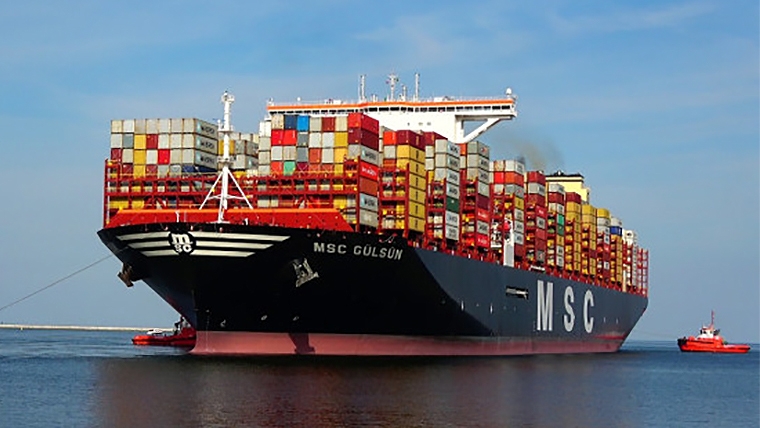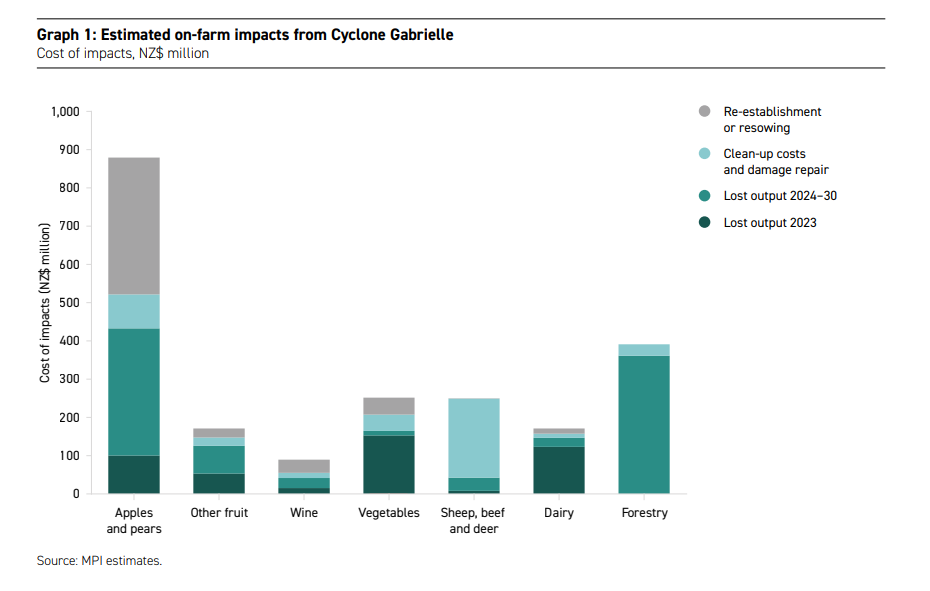
Flat returns are being forecast for the next financial year as the primary sector puts back the pieces from Cyclone Gabrielle.
This levelling out will follow a 6% rise in export values forecast for the current financial year which ends at the end of this month.
That figure puts food and fibre earnings at $56.2 billion, for the year to the end of June, up $1.2 billion from predictions made last December.
The numbers are found in the latest Situation and Outlook for Primary Industries (SOPI) report from the Ministry for Primary Industries.
The Government is crowing about the figures, calling trade and export growth a major cornerstone in its economic recovery plan.
"Our job now is to continue supporting our producers by opening doors for exporters wherever we can," the Prime Minister Chris Hipkins says.
“We need to maintain our international competitive edge to ensure New Zealand’s economy remains better positioned than many others against global headwinds,” Chris Hipkins said.
The figures to the end of June show dairy sector exports growing to become a $25.1 billion business. They also show seafood, horticulture and processed foods doing better sales.
But the good news is qualified by the immediate and lingering impact of Cyclone Gabrielle.
The SOPI report puts the cost of damage from the cyclone at a provisional estimate of $2 billion to $2.4 billion. This stems from clean up costs, repairs and rebuilding expenses and lost revenue.
The apple and pear industry was the worst affected, followed by forestry.
In both those cases, the loss of output could drag on for another seven years.

The food and fibre sector recovery is expected to cost $700 million to $1.1 billion, not counting insurable assets.
This work involves removing silt and debris, repairing farm infrastructure such as fences, and re-establishing damaged land by replanting crops, orchards, forestry or pasture.
These facts mean that even after next year's level figures, growth will return hesitantly, reaching 3% to 4%, in contrast with 6% in 2023 and 11% in 2022.
This will occur against a background of global growth which is faltering but is poised to recover. A similar prediction is forecast regarding inflation which is high but getting better.
Helping the New Zealand position is the fact that fertiliser and fuel prices are slipping back after rising sharply after Russia invaded Ukraine. In addition, commodity prices for New Zealand's products declined from their peak in March last year but remain above average.
6 Comments
Thought: Wouldn't the silt arguably make the land more fertile and hence be beneficial, especially given the cumulative level of fertiliser and chemicals that have been pumped onto the land previously?
We get more than our share of silt on our flats in big floods. The first effect is it smoothers all our pasture which then dies or the flood water heats up and "cooks" the pasture.
The silt is too soft to work with machinery so sits dormant until following rain washes it away.
The silt is usually poor quality soil with minimal mineral or phosphate content washed down from erosion prone hillsides that probably should have remained in trees and or bush to start with..
Spot on. The trouble with areas like Esk Valley and Pakowhai is the sheer volume of silt and lack of slope. In Esk Valley it is over head height in some places, and with very flat land there's little potential for rain to wash it away. Some people have swept it out of buildings only for it to dry up and blow back in. The ITM in North Clyde (Wairoa) is shutting down after something like 90 years because they just can't keep the stuff out of the shop.
The better resourced orchardists have turned the silt into the soil with added nutrients to try and bury it and allow the land to recover more quickly. My (early teenage) children have been part of groups that have gone to orchards to clear silt from around orchard trees by hand, in order to try and save them.
Crowing now but Labours medium to long term plan is to screw agriculture.
"fuel prices are slipping back" not here in NZ on the petrol side, about to jump but I guess diesel is not included in the subsidy.
Are they bloody kidding? This government, with the encouragement of the greens has done everything possible to throw roadblocks in the way of livestock farming. And the government has led/encouraged public vilification of the rural sector to the point many farmers are questioning continuing.
I thought the govt's verbal response to the ag numbers was/is absolute bullshit. They've done nothing but slag ag since they've been there. What a bunch of ar.......

We welcome your comments below. If you are not already registered, please register to comment
Remember we welcome robust, respectful and insightful debate. We don't welcome abusive or defamatory comments and will de-register those repeatedly making such comments. Our current comment policy is here.